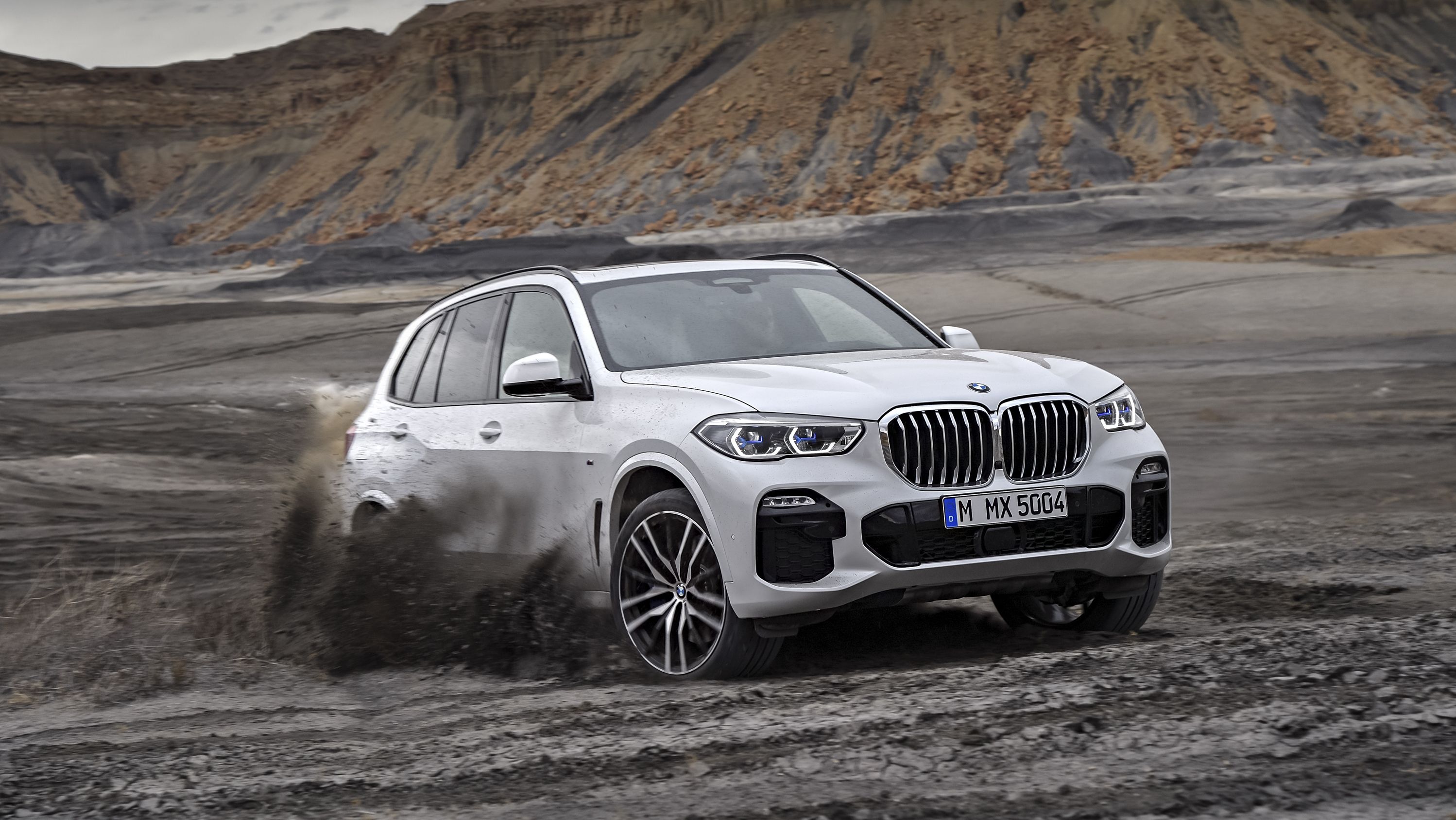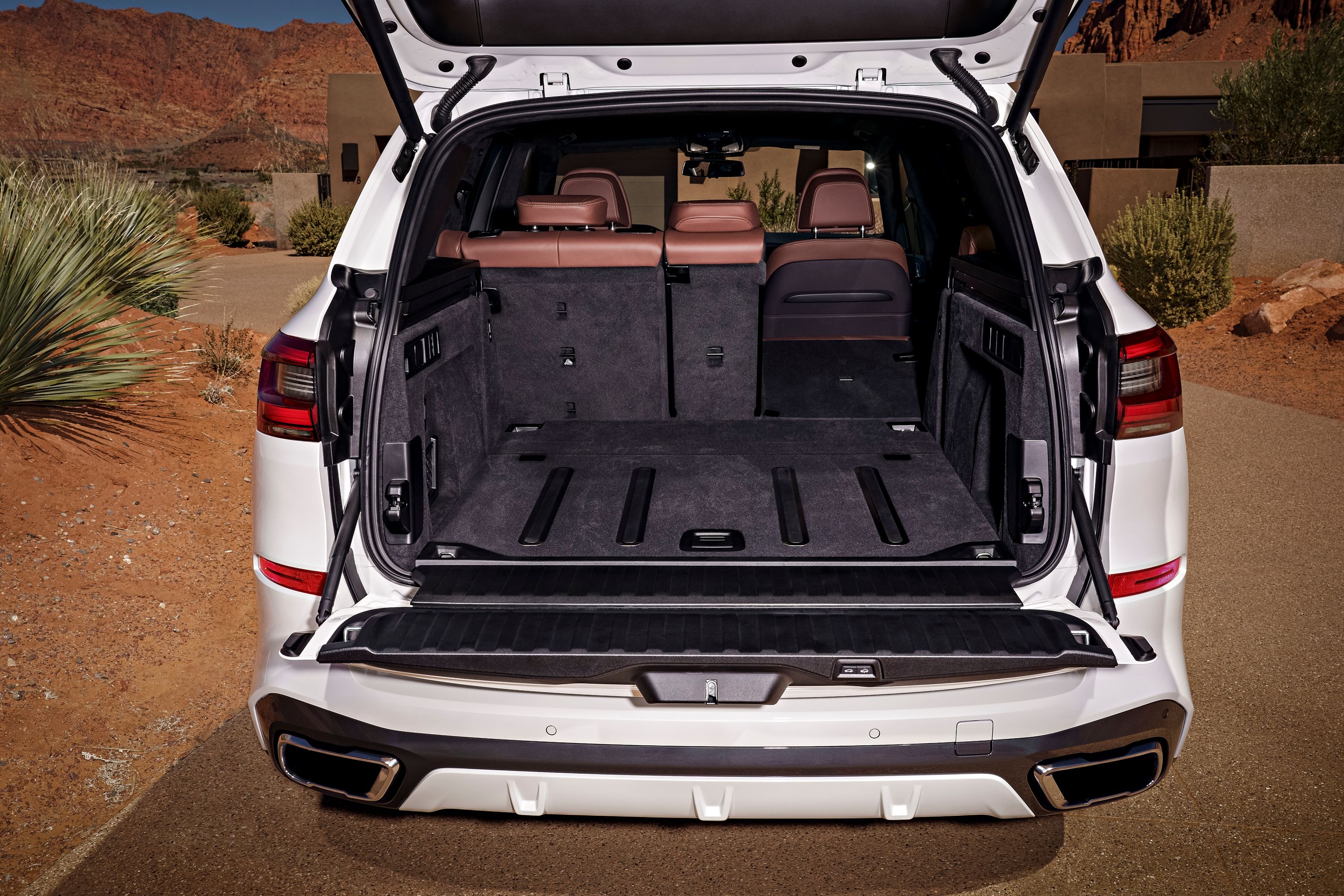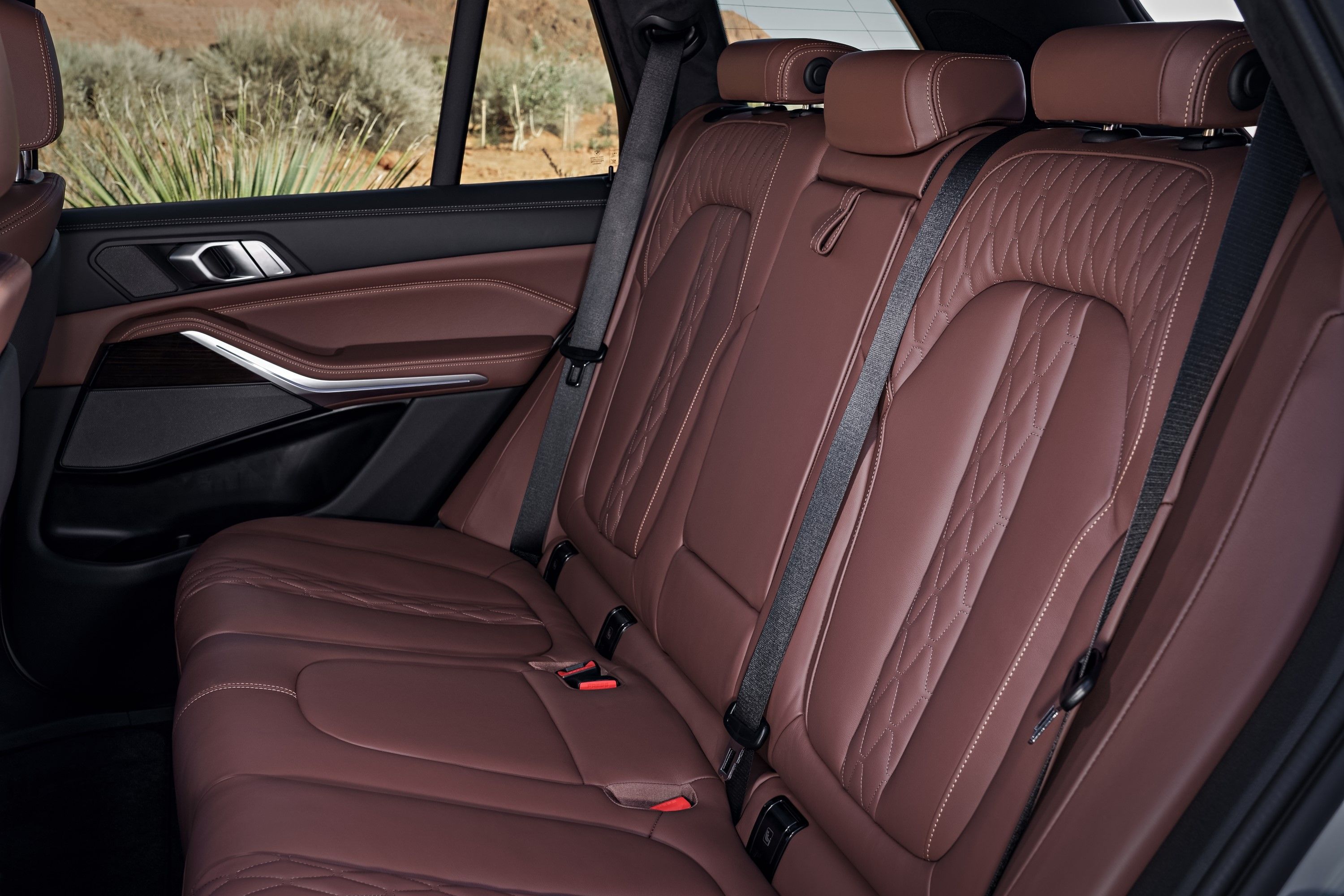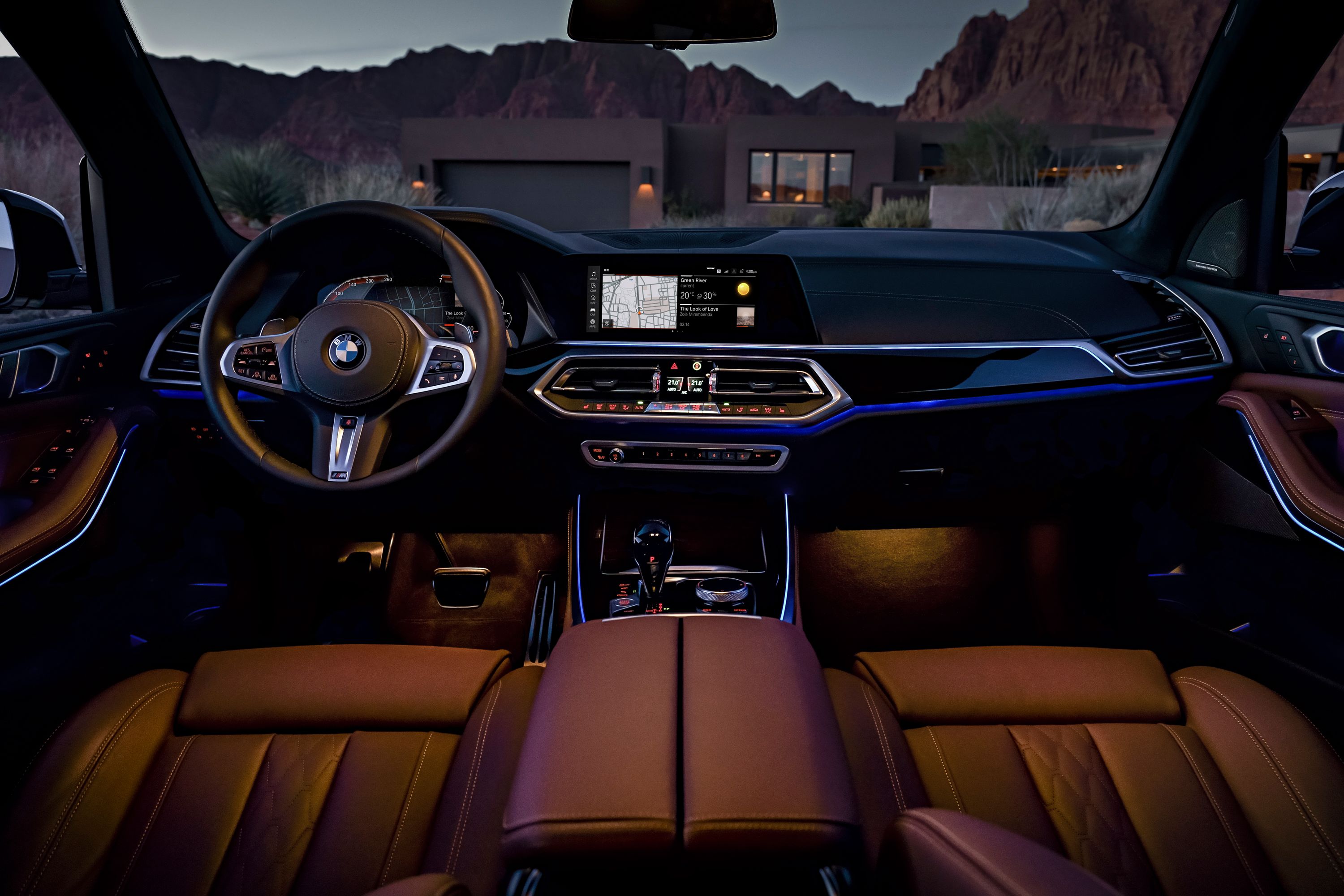BMW’s quest to make the new X5 SUV look sexier may have come at the expense of cargo space taking a significant hit. Spec data from the X5’s launch revealed that the minimum cargo space dropped from 35.8 cubic feet to 22.8 cubic feet but even more alarming, the maximum cargo space also dropped from 76.7 cubic feet to a paltry 65.7 cubic feet. Even with the rear seats in their full and upright positions, cargo space also dropped from 35.8 cubic feet to 31.7 cubic feet. Do the math, and that’s four cubic feet less than the previous model, representing 11 percent less space compared to the model it's replacing.
It’s hard to imagine an SUV growing in overall size and then seeing its cargo space shrink. Yet, somehow, BMW managed to do it with the X5. For the record, measurements on the SUV’s width and headroom grew appreciably, as you can see in the table below. That’s on top of the X5’s actual dimensions also increasing across the board. So why did all of that size increase have a negative effect on the cargo space?
It’s hard to tell why and Bimmer’s probably the only one who can answer that question. Is this a simple mistake, or is it part of a bigger plan by BMW to create a clear distinction between the X5 and the X7? For a bit of comparison, BMW managed to turn the X5 from an SUV that had a bigger cargo space compared to the Jaguar F-Pace — 33.5 cubic feet with the seats up — to having a smaller cargo space. It’s the same story with the Audi Q7, though the basis of comparison here involves having the second-row seats folded, creating that maximum cargo space in the cabin. The Q7 has 71.6 cubic feet of space with that configuration while the old BMW X5 had 76.7 cubic feet of space. Advantage Bimmer, right? Well, now it’s advantage Audi because the new X5’s max cargo space now sits at just 65.7 cubic feet.
It’s easy to look at the numbers and say that BMW messed up. But read between the lines, and you’ll realize that this could have been an intentional move on the German automaker’s part because of the presence of the BMW X7. Had the X5 actually increased its cargo space as the expectation goes, it could have done so at the expense of the bigger X7, which, by the way, is the model that the company is touting as its flagship SUV unit.
It’s a lame reason — really, it is — but it’s understandable if you’re talking about giving both SUVs enough room to breathe on their own without the other stepping on its toes. A significant gap in the cargo space of both models goes a long way in doing that. So BMW did what it did. It made the X5 bigger, restyled it to look sexier, and all the while, it rejigged the interior layout to cut down the SUV’s overall cargo space.
They say that strange things happen in the auto industry on a daily basis. Chalk this one as a perfect example of that.
BMW X5 Interior Dimensions
|
2018 BMW X5 |
2019 BMW X5 |
Difference |
|
|
Front Passenger Width: |
60.5 in |
61.4 in |
+ 0.9 in |
|
Rear Passenger Width: |
58.3 in |
60.03 |
+ 1.7 in |
|
Front Seat Cushion to Roof: |
39.8 in |
40.82 |
+ 1.02 in |
|
Rear Seat Cushion to Roof: |
38.3 in |
39.4 in |
+ 1.1 in |
|
Min Cargo Capacity: |
35.8 cu-ft |
22.8 cu-ft |
- 13 cu-ft } } |
|
Max Cargo Capacity: |
76.7 cu-ft |
65.7 cu-ft |
- 11 cu-ft } } |
Further Reading
Read everything we know about the 2019 BMW X5.
Read our full review on the 2017 BMW X5.
Read more BMW news.




